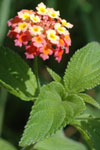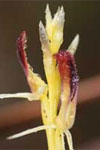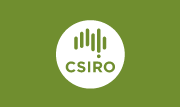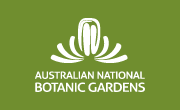Systematics and Evolution
(Program HA)
Program Leader: Joe Miller
Systematics Program: The goal of our systematics program is to determine the botanical diversity, distribution, inter-relationships and genetic systems of native genera and species of the Australian Flora. In this context, the aim of the Centre for Australian National Biodiversity Research is to contribute to innovative basic and applied systematics research, botanical teaching, conservation, the maintenance of plant diversity, and to produce tangible and acknowledged results to improve management of the environment.
Our studies are multidisciplinary, featuring a wide range of morphological and molecular approaches that are enhanced through the specialized use of other approaches including anatomy, cytology, phytochemistry, and breeding system studies. |


|
Systematics and phylogenetic studies of the Australian flora
Work in this area of the Program is largely focused on the angiosperms with particular emphases on: (i) families and groups in which we are examining systematic, phylogenetic and biogeographical questions at a range of spatial and taxonomic scales (Asteraceae, Myrtaceae [Eucalyptus, Melaleuca], Portulacaceae and Orchidaceae). In addition, a wide range of other families are receiving some attention either as more minor projects by research staff or as the focus of PhD students in the Centre.
Major Projects
Minor Projects
Rutaceae (non-Citrus), Santalaceae, ferns
|



|
Environmental Weeds
We are studying environmental weeds for which there is a taxonomic impediment to developing appropriate control strategies. The initial focus of this project is on the Weeds of National Significance (WONS) and our research addresses areas where lack of taxonomic knowledge affects the ability of managers to control these weeds. In particular we are using taxonomic methods to unravel the genetic history of invasions and identify the origins of these weeds. We are also using molecular techniques to determine the existence of distinct genetic races, their geographic distribution and the forces that structure this variation. The knowledge that we create will enable targeted biocontrol agent discovery and will allow land managers to optimise traditional control methods.
Willows (Salix spp.)
Invasive Ecology |


|
Phenological Studies
Data on flowering times of plants growing in the Australian National Botanic Gardens, collected some 30 years ago, present a rare opportunity to evaluate whether we can detect if Australian native plants now, or at some future time, flower at different times of the year than previously. Any changes in flowering times may indicate responses to climate change.
Flowering time and Climate Change |


|
Conservation Projects
The Bulahdelah Bypass project aims to address issues for the survival, sustainability and translocation of t wo nationally listed threatened orchid species Cryptostylis hunteriana and Rhizanthella slateri and a third New South Wales listed threatened orchid species Corybas dowlingii that are present within and adjacent to the proposed Pacific Highway Upgrade on the foot slopes of Alum Mountain at Bulahdelah.
Bulahdelah orchid translocation |


|
Understanding the functional diversity of communities is a crucial component of whole-system analyses of biodiversity and its role in ecological patterns and processes. In this study we will concentrate on the identification of species level functional traits. Ecosystem functions (e.g. nutrient cycling, formation of biopores and leaching capability) are moderated by the functional attributes of species in a community.
Water for a Healthy Country
|


|
Commonwealth Environmental Research Facilities - Taxonomy Hub
The Australian National Herbarium is a collaborator in the CERF National Taxonomy Hub with CSIRO Divisions of Entomology (the Australian National Insect Collection) and Sustainable Ecosystems (the Australian Wildlife Collection), The Australian National University Department of Botany and Zoology, ABRS and collaborating universities in a three year collaborative project to enhance and accelerate taxonomic research and delivery of information on Australia’s biodiversity.
National Taxonomy Research Hub
|

^ CSIRO Canberra
* Tropical Herbarium, Cairns
# SEWPaC (ANBG)
(PDF) = Postdoctoral Fellowship
(HRF) = Honorary Research Fellows
(PhD) = Graduate Students |
Staff
PROGRAM LEADER
Miller, Joe ^
STAFF, HONORARY ASSOCIATES & STUDENTS
Listed under individual projects
|
|
|
![An Australian Government Initiative [logo]](/images/austgovt_canbr_90px.gif)

![An Australian Government Initiative [logo]](/images/austgovt_canbr_90px.gif)



